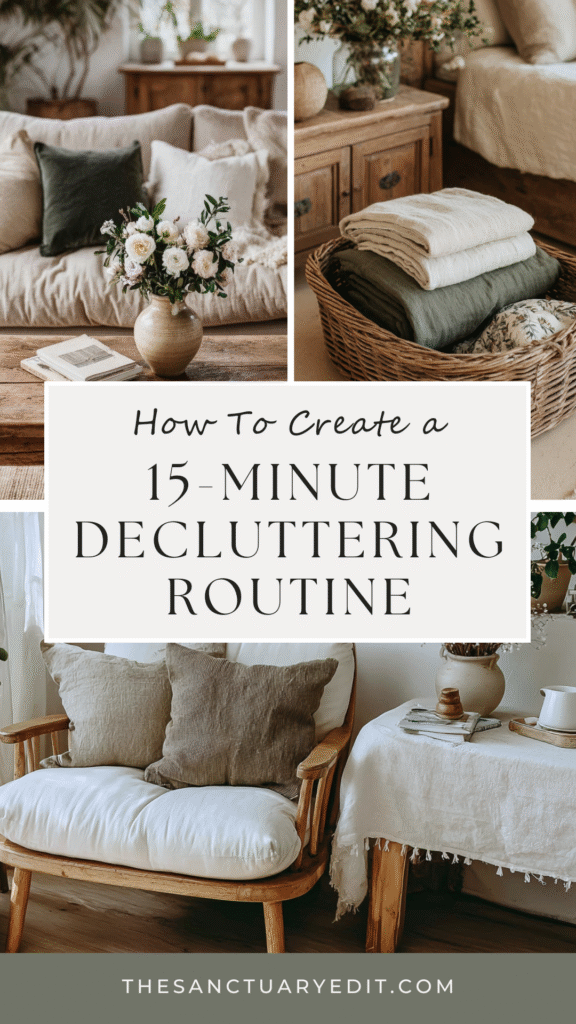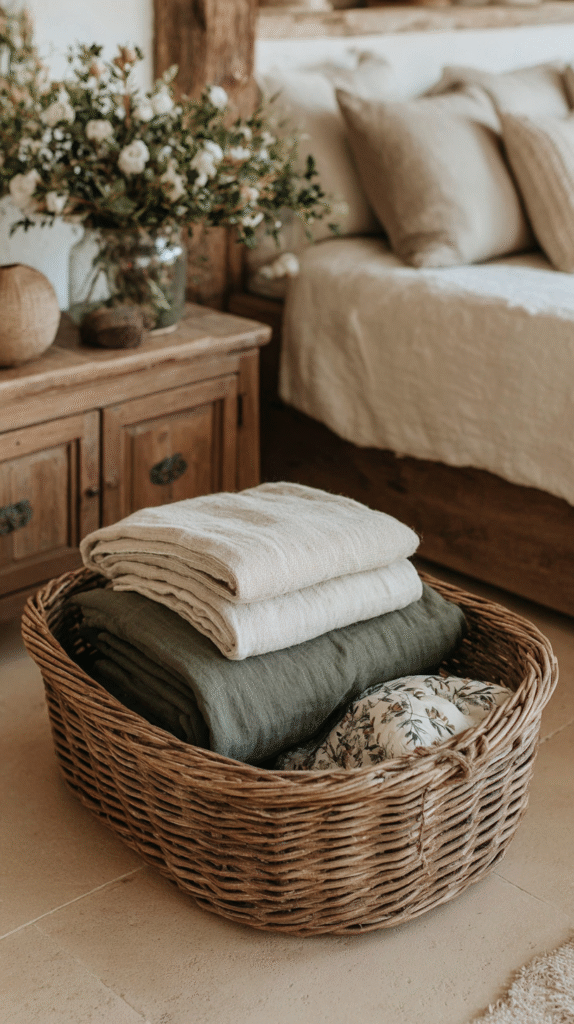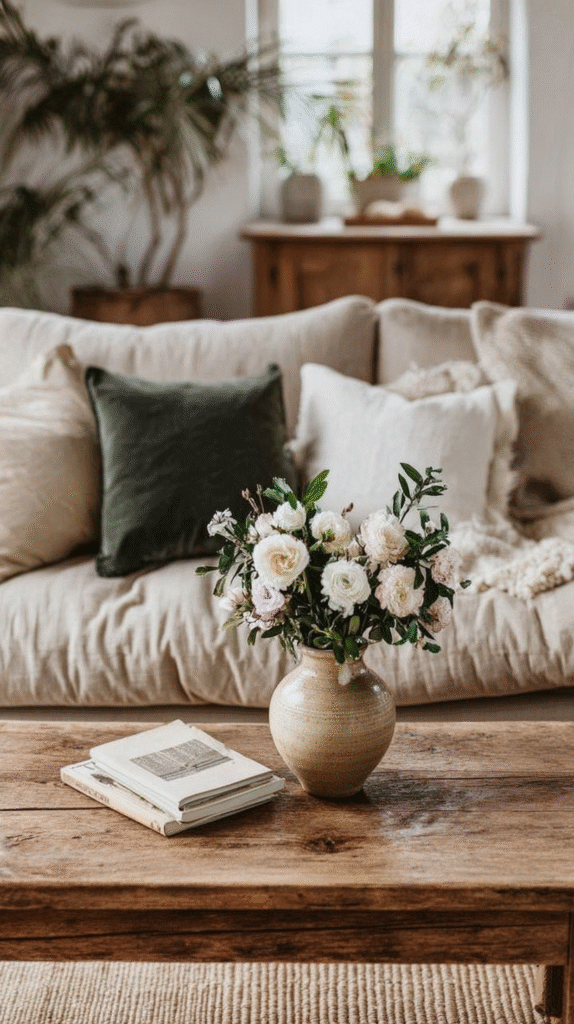This post may contain affiliate links, including those from Amazon Associates. If you make a purchase through these links, I may earn a commission at no additional cost to you. Learn more about our affiliate policy.
Clutter is more than things out of place. It is the pile of mail that nags at you, the overstuffed drawer you avoid opening, the shoes scattered by the door that trip you on your way out.
When your space feels crowded, your nervous system mirrors it, staying in a low-level state of stress. The good news is you do not need hours to restore calm.
A simple 15-minute daily routine can shift your environment from overstimulating to supportive, creating small but powerful moments of peace.
This guide offers a gentle structure for a daily decluttering rhythm that feels realistic, manageable, and grounding.
Why a 15-Minute Routine Works
Large decluttering projects often end in exhaustion. You begin with good intentions, only to burn out before finishing. A daily 15-minute approach removes the pressure of “doing it all” and turns the process into a ritual of care.
Fifteen minutes is long enough to clear a surface, sort a drawer, or reset a corner. It is short enough that you can start without dread. Research shows that consistent micro-actions build lasting habits.
When you repeat this daily, clutter never has the chance to build into chaos, and you end each session with the sense of accomplishment that comes from reclaiming a little order.
Most importantly, the nervous system responds to predictability. When your eyes land on a cleared table or a calm entryway, your body reads it as safety. Small resets support deeper rest.

What You Need to Begin
You do not need fancy tools to start, but a few simple supports make the process smoother.
- A timer: Set it for 15 minutes. The limit prevents overwhelm and gives your brain a clear container for the task.
- Sorting containers: A basket or box for items to relocate, one for donations, and a small bin for trash or recycling.
- A short list of zones: Jot down surfaces or areas that often gather clutter—nightstand, kitchen counter, bathroom shelf. Having a plan removes decision fatigue.
- A gentle mindset: This is not about perfection or completing a room. It is about giving your nervous system a break from visual noise.
With these in place, you can begin anywhere, even tonight.
Step 1: Choose Your Time and Zone

The key is consistency. Anchor your routine to a moment that already exists in your day. You might declutter after dinner, while the kettle boils, or just before bed.
The more you pair it with an existing rhythm, the easier it is to sustain.
Choose one small zone each day. A single surface, a drawer, or a basket is enough. Trying to tackle an entire room will break the rhythm before it begins.
Step 2: Set a 15-Minute Timer
Once the timer is set, begin.
This clear boundary frees you from the trap of “just one more thing.” You work with focus, knowing you will stop when the bell sounds. Some days you may finish early. That is perfectly fine.
The goal is a calm nervous system, not a spotless home.
Step 3: Sort Quickly and Simply

As you work, place each item into one of four categories:
- Keep: Items you use often or that bring genuine joy.
- Donate: Items in good condition that no longer serve you.
- Trash or recycle: Things broken, expired, or beyond repair.
- Relocate: Items that belong in another space.
Do not overthink. If a decision feels heavy, set the item aside to revisit later. The point is movement, not perfection.
Step 4: Clear and Reset the Space
Once you have sorted, take a moment to wipe the surface or tidy the area.
Return the “keep” items thoughtfully, leaving more negative space than before. Allow the cleared area to breathe. Place the donation box near the door so it leaves the home easily.
Carry the relocate basket with you as you move into the next part of your day.
This simple act of completion tells your body that the task is finished. Even if it is just one shelf, the closure matters.
Step 5: Celebrate the Small Win
Pause to notice how the space feels.
Maybe sit in the chair beside the now-clear table or light a candle on the decluttered shelf. Take a slow breath. This moment of recognition is what builds motivation to return tomorrow.
When you associate decluttering with calm, your nervous system begins to anticipate the relief, turning the practice into something you look forward to rather than resist.
Tips to Make It Stick

Gentleness is what allows this routine to last.
- Work in micro-zones: Focus on one surface or drawer at a time. Small spaces bring quick wins.
- Rotate through the home: Tackle the kitchen counter on Monday, your nightstand on Tuesday, the bathroom shelf on Wednesday. Over time, the entire home receives attention without pressure.
- Use sensory cues: Play soft music, brew tea, or light a candle before you begin. Associating decluttering with comfort anchors it as a ritual rather than a chore.
- Embrace imperfection: If you only manage five minutes one day, let it count. Progress is enough.
- Leave room to breathe: Resist filling every inch. Aim to keep at least part of each surface clear. That negative space is as important as what remains.
If you want a fuller guide to beginning this process, explore this piece on how to start decluttering your house without overwhelm.
Overcoming Common Challenges
Decluttering is not just physical—it touches emotions, memories, and beliefs. These gentle strategies help when you get stuck.
- Decision fatigue: If you struggle to choose, ask yourself, “Does this item support calm or add noise?” Keep it simple.
- Attachment or guilt: Take a photo of sentimental items you no longer need to keep. The memory remains even when the object goes.
- Inconsistency: Use a reminder or alarm. Over time, the routine becomes automatic.
- Low energy: Choose a lighter task on hard days, like clearing one corner of the counter or emptying the trash. Even small actions shift the atmosphere.
The Benefits You Will Notice
After just a week of daily 15-minute sessions, you may find:
- Clearer surfaces that feel like visual breathing room.
- More ease finding everyday items.
- A sense of lightness when you walk into your home.
- Improved rest when the bedroom is uncluttered.
- A subtle but steady increase in confidence as you realize you are in control of your environment.
Over a month, the ripple effect becomes larger. Your home begins to feel easier to maintain, and your nervous system has more space to settle.
Turning Decluttering Into a Calming Ritual
Beyond the practical outcome, this routine can become a form of self-care.
Consider beginning with a deep breath, using a favorite cloth or basket, or ending with a moment of stillness in the refreshed space.
The act of putting things in order is a way of tending not only to your home but to your inner world. When clutter no longer pulls at your attention, your nervous system finally receives permission to rest.
For more ways to pair home care with nervous system support, you may enjoy how to create a peaceful home that supports nervous system regulation.
Closing
Creating a 15-minute daily decluttering routine is not about achieving a perfect home. It is about building a small ritual that tells your body and mind they are safe, supported, and free to exhale.
Each clear surface, each drawer restored, is a reminder that calm can be created in minutes. Begin with one corner tonight. Set the timer, breathe, and notice the shift that even the smallest edit can bring.

